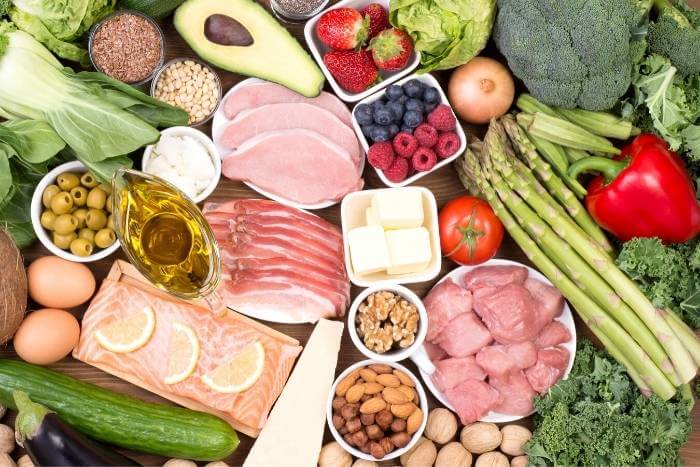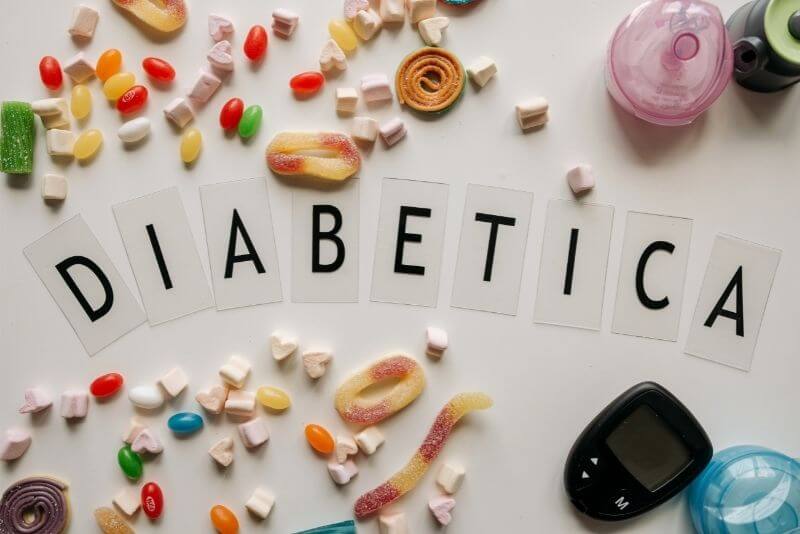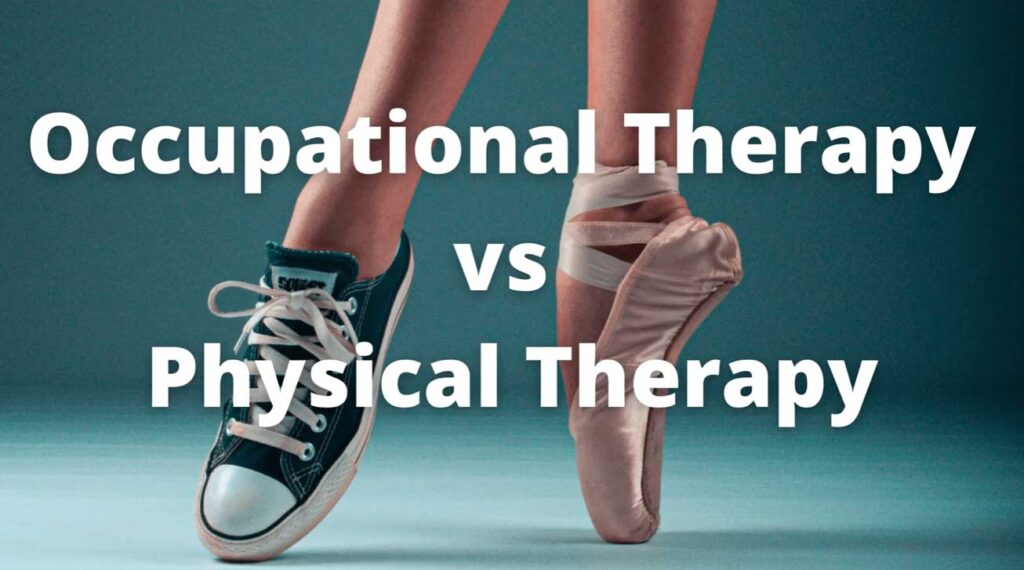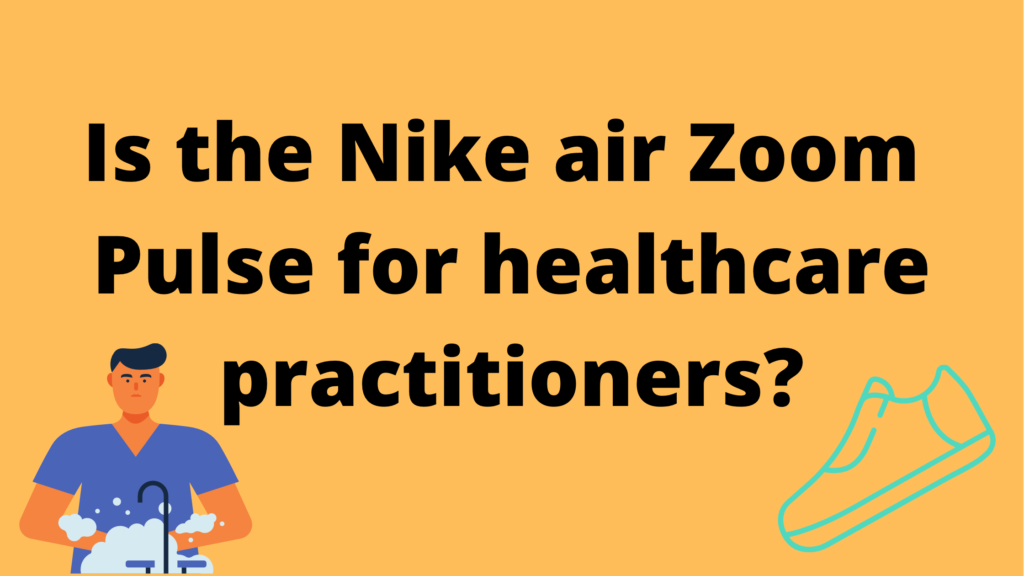(Note: Post contributed by Ben Tanner, a Physician Assistant.)
As an OT, perhaps your main role isn’t nutrition advice. But even a few simple tips, a couple key resources, and a little encouragement can go a LONG way in helping your patients improve their quality of life.
In this article, I’ll go over some basic advice and other resources you can use to help your patients who are struggling with high blood sugar.
Occupational Therapy’s role in Diabetes education
As healthcare practitioners, OTs have an important role in diabetes education. Diabetes is part of self care, so as therapists we should be educating patients on ways to maintain, improve, or reverse diabetes.
According to AOTA, OTs can have a role in diabetes education by encouraging behaviors such as healthy eating habits, diet and exercise, monitoring, problem solving, and medication management.
Here are some ways you can educate your patients to help them improve or reverse diabetes.
Lowering Carb Intake Can Dramatically Improve Type 2 Diabetes
Overall, this one’s pretty simple:
If your patients with diabetes eat fewer carbohydrates, their blood sugar won’t go as high. And that’s an improvement.
That also means they won’t need to take as much insulin (which they’ll probably be happy to hear, since insulin promotes weight gain).
Just explaining this simple connection could be really useful for some patients.
What Foods to Avoid (or Reduce) to Improve Blood Sugar

You went to a lot of schooling, so you probably know what foods raise blood sugar.
But in my experience, most patients don’t have much of a concept about how much carbohydrate versus protein versus fat is in their food.
As a result, it may be helpful to at least list off some foods to cut back on a little bit.
For example, you could tell them (maybe with a photo):
Bread, cereal, pasta, rice, and potato products are all high in carbs, so they’ll raise your blood sugar a lot.
Soda, juice, and other sugary drinks raise your blood sugar even more, because the liquid sugar gets absorbed faster.
Sweets and treats (i.e. desserts & candy) are also very high in sugar. So they raise blood sugar and make diabetes worse.
Obviously, your patients aren’t going to cut out all these foods overnight. But at least having some idea where to start is helpful.
Which Fruits Are Good for Diabetic Patients?
On a related note, fruit can be a confusing topic for patients with diabetes.
Basically, we’ve been told our whole lives that fruit is healthy. But at the same time it’s also relatively high in sugar, which can be a problem for patients with diabetes..
So explaining a little bit about the sugar content in fruit may be helpful.
Here’s one easy suggestion:
Strawberries, raspberries, blueberries, and blackberries are all relatively low in sugar, while still packed with nutrients. So they’re an excellent option for a diabetic patients who want to eat some fruit.
What Fruit Should Diabetic Patients Avoid?
Some of the most popular fruits are actually quite high in sugar.
This includes apples, bananas, oranges, grapes, mangos, and basically anything else that tastes particularly sweet.
For most patients with diabetes, I’d advise them to limit the amount of hyper-sweet fruit that they eat.
What Can Diabetic Patients Eat Instead of these Carbs?
Basically, I would encourage patients with diabetes to eat plenty of healthy fats, and protein.
Here are some examples:
- Meat
- Fish
- Poultry
- Eggs
- Whole fat dairy
- Olive oil
- Coconut oil
- Avocados
- Nuts – all types
Those foods WON’T raise blood sugar or insulin very much, and that’s what we want.
As a bonus, foods with more fat and protein content slow down stomach emptying and stimulate satiety hormones, so patients won’t feel like eating as often.
In addition to the foods above, I would recommend eating plenty of leafy greens and other non-starchy vegetables (basically anything besides corn, potatoes, and sweet potatoes), for the nutritional value.
A Good Breakfast for Prediabetes or Type 2 Diabetes
Contrary to (historically) popular opinion, a high-carb breakfast with something like oatmeal is not great for diabetic patients.
A better option?
Eggs and bacon! Delicious…and nutritious. 😉 Not to mention satisfying.
In other words, anything that’s low in carbohydrates, but high in fat and protein, is a good breakfast option for someone with diabetes.
That way their pancreas won’t be stimulated to pump out a bunch of insulin first thing in the morning (when they’re also more insulin resistant because of the higher cortisol levels you wake up with).
Bonus Topic: Ketogenic Diets Can Help Patients with Diabetes
As you may have noticed, if you start replacing grains, starches, and sweets with foods that are low in carbs, you’ll be getting closer to something like a ketogenic diet
And that’s not a bad thing.
It was kind of a taboo topic until the last few years. But low-carb / high fat has been shown to be safe and effective for diabetic patients. The ADA even added it to their recommended options list in 2020, at long last.
It’s pretty obvious why it works, too:
Lower carb intake = lower blood sugar and lower insulin. Win!
Fasting Can Also Improve Diabetes
Along with lower carb intake, intermittent fasting is another trendy topic these days.
And for good reason.
Fasting has been a normal part of human history for thousands and thousands of years. It kind of fell out of favor for a while with the medical establishment, but it’s gradually coming back as people realize how beneficial it is.
As with low carb, the logic is simple:
When you don’t eat for a while, your blood sugar and insulin gradually get lower, which is really helpful for someone with diabetes.
Intermittent Fasting (a.k.a Time-Restricted Eating) Helps with Diabetes Control
At this point, your patients have probably heard about intermittent fasting. So they might be wondering if it would be useful for them.
Hint: The answer is yes. 🙂
Here’s a simple way you could help them get started:
Suggest delaying breakfast by about 1 hour in the morning, or eating dinner a little bit earlier in the evening (and no snacks afterwards).
In other words, they’d be shortening their eating window just a little bit each day.
After a while, they could try skipping breakfast completely once a week, and gradually work their way up from there.
If they get hungry, they can try drinking something like apple cider vinegar or lemon water while they’re fasting.
It helps if they use an app to track the timing of eating/fasting. One popular option is the Zero Fasting App, which also has some built-in patient education–even in the free version.
If you explain to your patients how to take a really simple, easy, and gradual approach to intermittent fasting, you’ll be giving them one additional tool that’s effective in combating diabetes.
Fasting as a Cure for Type 2 diabetes
Your patients may have even heard that type 2 diabetes can be reversed.
It’s true. 🙂
You probably won’t want to get into all the nitty-gritty, but one great resource you can refer them to is The Diabetes Code, by Dr. Jason Fung.
Dr. Fung has helped thousands of patients improve or reverse diabetes with fasting, so he really knows his stuff. The book is packed with science, yet down to earth, and full of practical tips.
You may just be able to change your patient’s life (in a majorly positive way) by recommending this book.
Don’t Forget — Patients on Insulin and Certain Other Medications Need Medical Supervision
Make sure you let your patients know: Once they start lowering carbs, or fasting, their insulin requirements are gonna go down fast!
They’ll need to start lowering the dose right away so they don’t become hypoglycemic.
Naturally, they should work with their prescriber to adjust medication dosages when fasting or eating low carb.
Fasting and low carb also tend to lower blood pressure, so patients will likely need to lower the dose of their blood pressure medications as well.
Final thoughts
Modest reduction in carbohydrate intake is great for patients with type 2 diabetes (or pre-diabetes). Most patients don’t really understand what’s in their food, so some simple education can make a big difference.
A ketogenic diet is even more beneficial than just modestly cutting carbs, as it will lower blood sugar and insulin even more.
As a bonus, fasting helps reduce blood sugar and insulin as well. When done properly, it can not only improve type 2 diabetes symptoms, but even reverse the condition entirely.
If you have a diabetic patient who seems motivated, tell them about The Diabetes Code! That could be a game changer.
You’re not going to completely change your patient’s lifestyle overnight.
But you CAN give them some powerful tips and resources that may just transform their lives.

David is the lead editor of OT Focus. He has been practicing as an Occupational Therapist since 2013. He specializes in acute care, hand therapy, and ergonomics.




